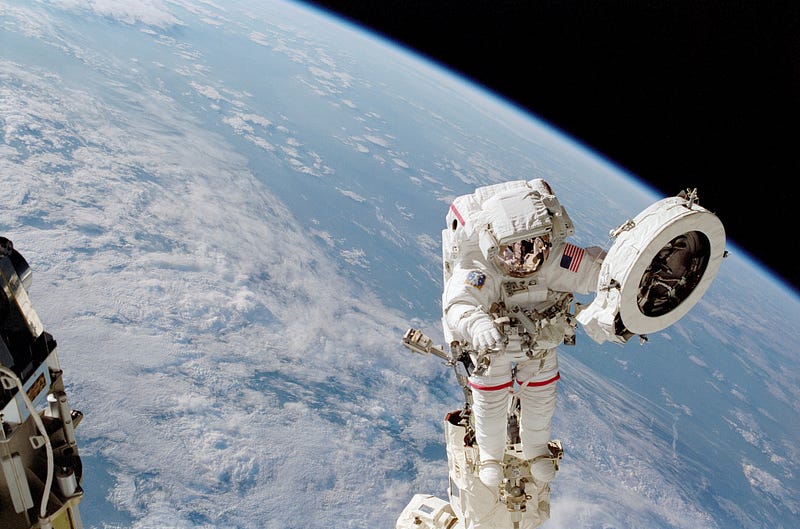The Future of Human-AI Collaboration in Space Exploration
Written on
Chapter 1: The Space Frontier
The universe, with its immense expanse and challenging environments, has primarily been the domain of robotic explorers. These machines are well-suited for extreme conditions, enduring harsh temperatures, radiation, and the vacuum of space without the need for life support. Despite this, humans possess an unmatched capability for adaptability and problem-solving in unforeseen circumstances. This raises the intriguing question: What if we could merge the strengths of both humans and machines to delve deeper into the mysteries of space?
Integrating artificial intelligence with human capabilities opens up a world of possibilities reminiscent of science fiction. Envision a hybrid of biology and technology, resulting in cyborg-like entities capable of thriving in the most hostile cosmic environments. This theoretical advancement includes neural interfaces that link the human brain with AI systems, enhancing cognitive functions and facilitating direct communication with machines. Physical enhancements, such as robotic limbs and synthetic organs, could provide augmented strength and endurance.
In this advanced scenario, sophisticated sensors and processors would serve as a conduit between human intuition and AI reasoning. This combined intelligence—merging human emotional insight with AI's analytical capabilities—could revolutionize space exploration.

Chapter 2: Ethical Considerations
As we contemplate this evolution, ethical and societal implications become critical. The design and application of human-AI integration for surviving in space necessitate careful consideration of ethical guidelines, privacy issues, and societal repercussions. It is essential to maintain a balance between technological progress and ethical accountability.
The potential features of such integrated beings, specifically engineered for the demands of space exploration, could include:
- Enhanced Adaptability: AI could help regulate bodily functions, allowing for better adjustment to the challenges posed by zero gravity and radiation.
- Biomechanical Improvements: Robotic limbs or exoskeletons could enhance mobility and strength, crucial for navigating low-gravity settings.
- Advanced Life Support Systems: Wearable or implantable technologies could assist with vital functions like oxygen supply, waste management, and protection from cosmic radiation.
- Sensory Enhancement: Improved sensors could enhance perception, aiding in hazard detection, environmental assessments, and long-distance communication.
- AI-Enhanced Decision-Making: Integrated AI would streamline responses to unexpected situations and assist in complex problem-solving during missions.

Chapter 3: The Path Ahead
The creation of adaptable and resilient beings equipped with AI technology is vital for ensuring human survival in the harsh conditions of space. The combination of human intelligence and machine accuracy could signal a new era where we are no longer confined to Earth, but instead, empowered to explore the cosmos.
As we embark on this journey, it is crucial to navigate the ethical and societal challenges ahead. Our goal should be to foster a future where human and artificial intelligence integration not only broadens our cosmic possibilities but also preserves the core of humanity amidst this technological advancement. The quest to become the cosmic explorers of tomorrow is underway, fueled by the synergy of human creativity and AI innovation.
Exploring the intersection of AI and human creativity, environmental sustainability, and language evolution.
A deep dive into the future of human-AI integration, featuring Misha Sra's insights on technological advancements and ethical considerations.